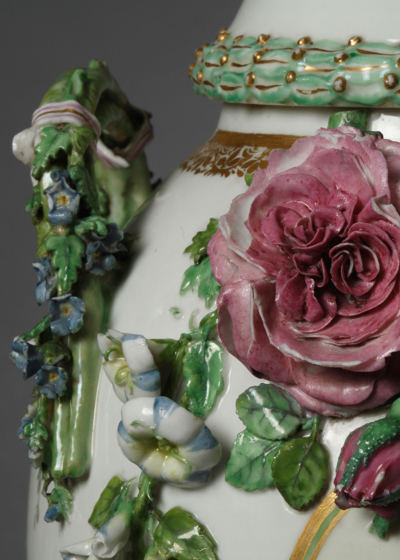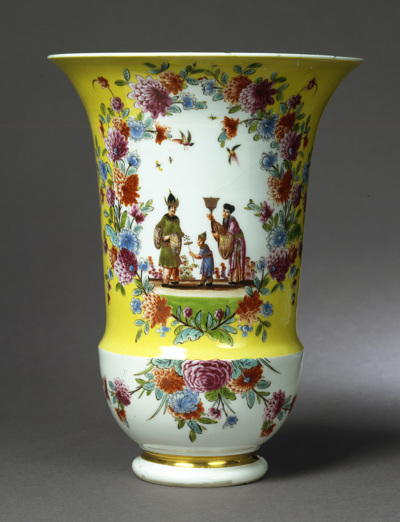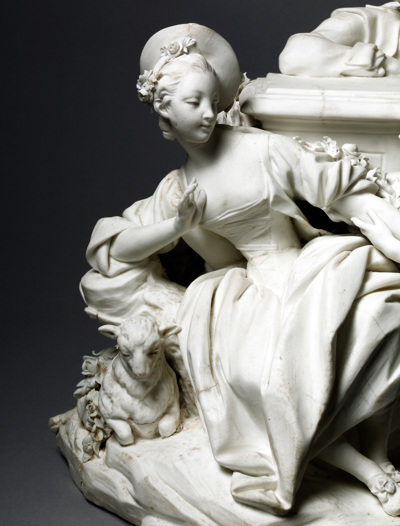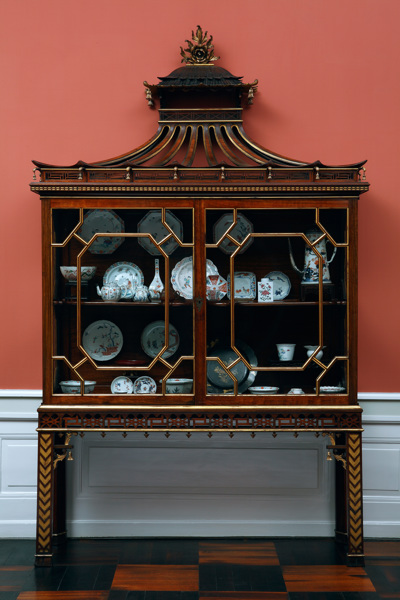Dansk keramik

Fajance og porcelæn omplantet til Norden
Den københavnske fabrik i Store Kongensgade (1724-1771) var som den første i Norden anlagt til produktion af blå-hvide fajancer. Under ledelse af tyskeren Johann Ernst Pfau (1727-1749) udførtes fajancerne, hvad typer og dekorationer angår, i en sen-barok stil, beslægtet med de samtidige tyske og franske. Efterfølgende brød rokokostilen igennem i fabrikkens produktion.
Store Kongensgade-fabrikken (1722-slutningen af 1770’erne) blev dog snart udkonkurreret af en række nye virksomheder, der etableredes bl.a. i Kastrup og i hertugdømmerne i Slesvig, Eckernförde og Stockelsdorf. Disse fabrikker kunne også fremstille polykrome fajancer
I 1759 ankom franskmanden Louis Antoine Fournier til Danmark, og det ”bløde porcelæn”, som han fremstillede i de kommende år, var nært beslægtet med det franske. Allerede 1766 måtte produktionen dog indstilles, da det ikke var muligt at afsætte det kostbare og i dag yderst sjældne porcelæn.
Fourniers værksted blev overtaget af apoteker Franz Heinrich Müller, som det lykkedes at fremstille det ægte hårde porcelæn, og i 1775 grundlagdes Den Kongelige Porcelainsfabrik – fra 1779 med Christian 7. som ejer. Produktionen henvendte sig til grupper med forskellig økonomisk formåen: Dyrest var det brogetmalede, dekoreret i overglasurmaleri i mange farver og med guld. Billigst var det blåmalede porcelæn, f.eks. det såkaldte musselmalede i underglasurmaleri.
Porcelæn fra Meissen i Tyskland og Sèvres i Frankrig udgjorde i mange tilfælde forbilleder for Den Kongelige Porcelainsfabriks tidligste modeller og dekorationer.


